Tune In, Chill out
Share
Life can be crazy, hectic and unpredictable. Just when you think you have it nailed, something comes along and throws you off-kilter, challenging your fight or flight response. We become anxious, reactive, and our overall mental and physical wellbeing takes the hit. So staying grounded, or knowing how to ground yourself is vital. This workout from Alexandra Legouix is here to help…
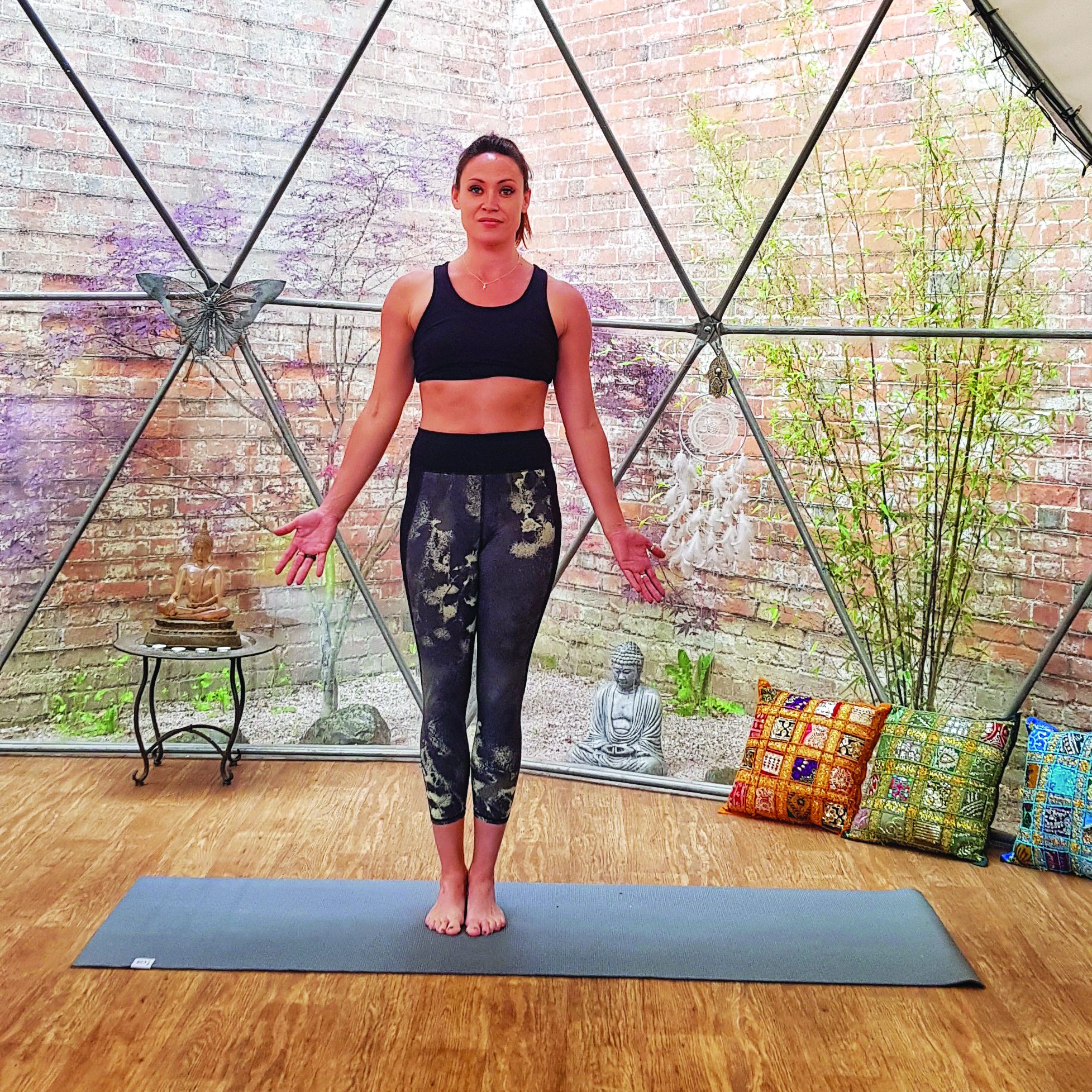
TADASANA (MOUNTAIN POSE)
How to: Stand with your big toes touching and heels slightly apart. Lift your chest and roll your shoulders down your back, palms forward. Finish by adding the slightest tuck to the chin (Jalandhara Bandha) and lengthen the crown of your head toward the sky. Find your Ujjayi Pranayama by breathing in and out through your nose while constricting your throat. Stay here for 5–10 breaths.
Benefits: Ironically, this is one of the hardest asanas for us humans to do because essentially we need to stay still… and we’re not so good at that, are we! We love to fidget. Standing grounded in this mother pose will improve our patience and focus as well as our posture whilst strengthening our core, legs and buttocks.
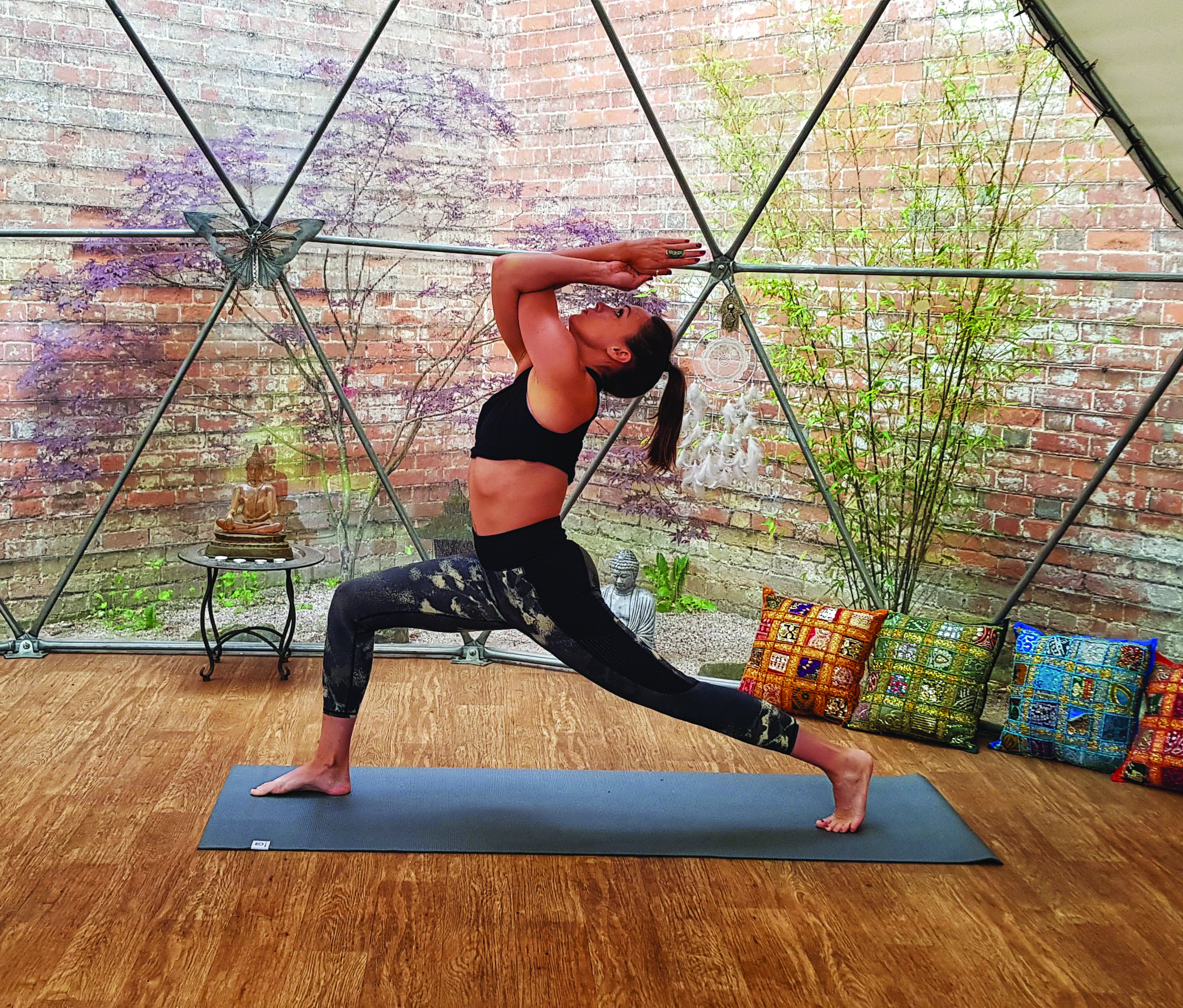
ANJANEYASANA (LOW LUNGE WITH EAGLE ARMS)
How to: Step one leg way back and land on your toes. Extend your arms straight in front of your body. Drop one arm under the other. Bend your elbows, and then raise your forearms perpendicular to the floor. Wrap your arms and hands, and press your palms together (or as close as you can get them). Lift your elbows and reach your fingertips toward the ceiling. Keep your shoulder blades pressing down your back, towards your waist. Lift your chest towards the ceiling, draw your shoulders down whilst gently leaning away from your eagle arms. Move toward a 90-degree angle in your front leg. Engage your abs.
Benefits: This pose gives the hamstrings, groin, quadriceps, and hips a good stretch, and also allows a full range of motion in the lower body. The addition of eagle arms demands deeper mental attention and focus and, by the nature of squeezing and unwinding the upper body, the pose encourages harmony of the left and right side – therefore restoring balance as well as loosening off tension and stress from the wrists, arms and shoulders.
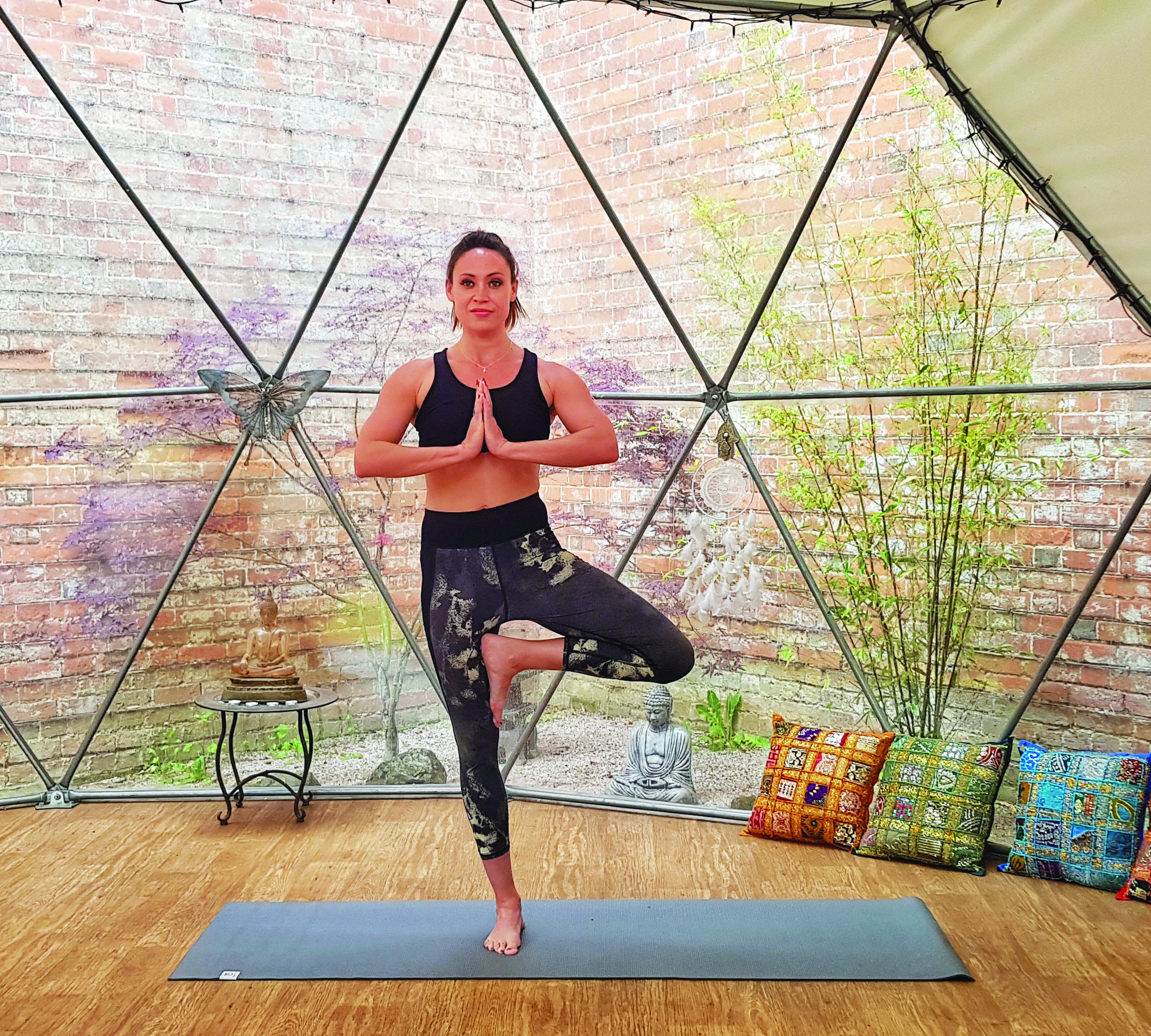
VRKSASANA (TREE POSE)
How to: This is one of the simplest yet most effective of the balance poses. Take a moment to feel both your feet root into the floor with your weight distributed equally on all four corners of each foot. Begin to shift your weight into your right foot, lifting your left foot off the floor. Keep your right leg straight but don’t lock the knee. Bend your left knee and bring the sole of your left foot high onto your inner right thigh. Press your foot into your thigh and your thigh back into your foot with equal pressure. This will help you keep both hips squared toward the front so your right hip doesn’t jut out. Focus your drishti (gaze) on something that doesn’t move to help you keep your balance. Breathe while holding the pose, and then change sides.
Benefits: Oh how much do we love the Vrksasana tree pose! Not only is it a great hip opener, it strengthens the legs, buttocks and core. This is the truest rooting pose – hence the name – and it really can bring on a wonderful sense of inner calm. It teaches you to be strong yet light – rooted without being rigid. The key is to feel rooted in your legs and feet, but relaxed and easy on top. Solid and graceful. Really imagine you are a tree!
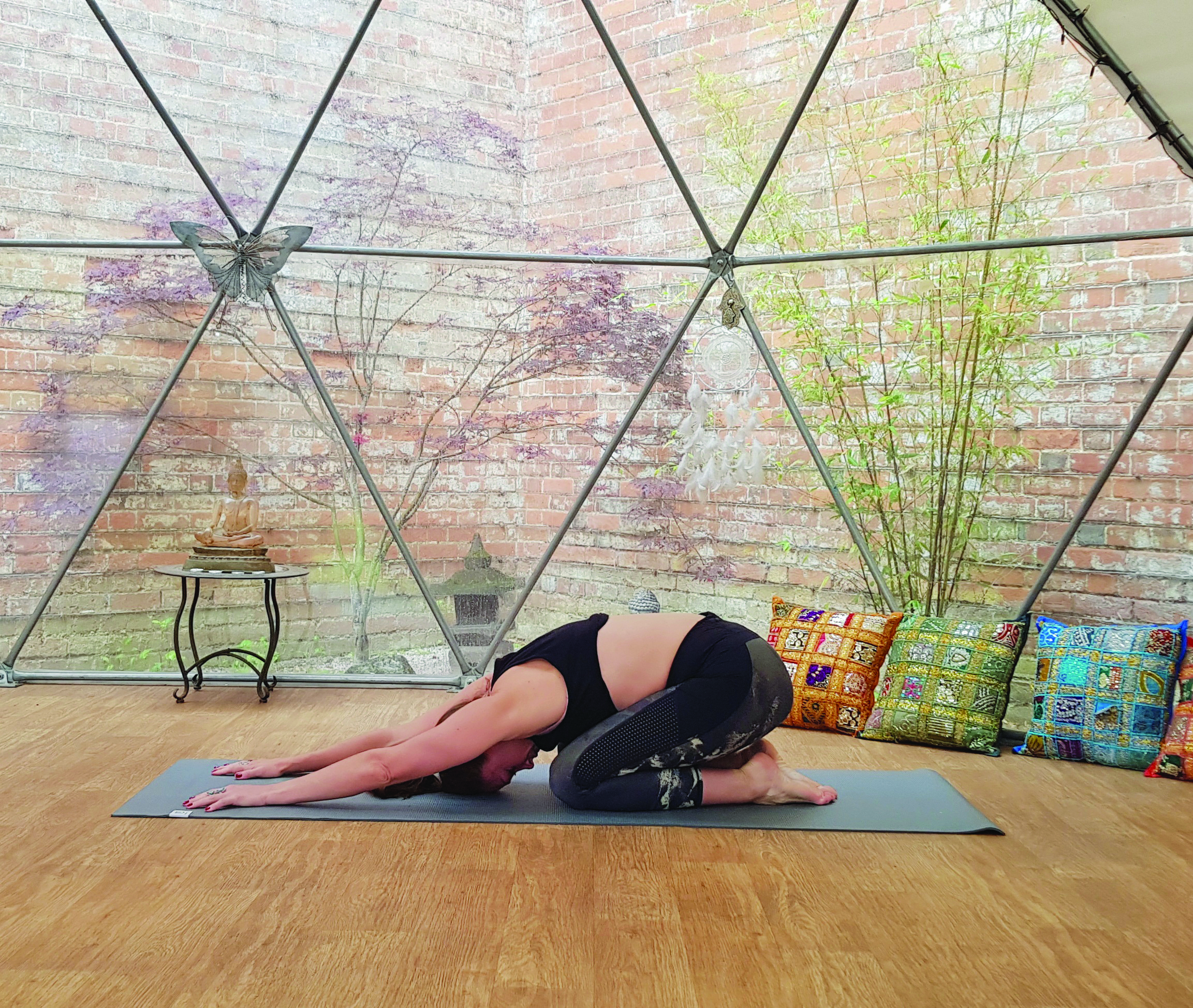
BALASANA (CHILD’S POSE)
How to: Begin by sitting back on your heels with the knees hip-width apart and the palms on the thighs. The torso is then lowered toward the thighs while the arms stretch forward and the forehead and palms rest on the floor. Become aware of your breath. Feel your back body rise with your inhale and draw in with the exhale. After several breaths, focus your awareness on the inhale traveling down the spine and the exhale traveling back up. Finally, expand your awareness laterally by feeling the ribs open and expand with your inhale and contract with the exhale.
Benefits: The ultimate ‘self check in’ pose. This is a restorative, gentle and restful posture which has calming benefits for the body and mind. The name is derived from the Sanskrit utthita, meaning ‘extended’, bala, meaning ‘child’, and asana, meaning ‘pose’. In need of even more rooting or grounding energy? Bring your arms out in front of you, palms down, and press your hands into the mat. Focus your awareness on your hands, forehead, and feet pressing into the earth.
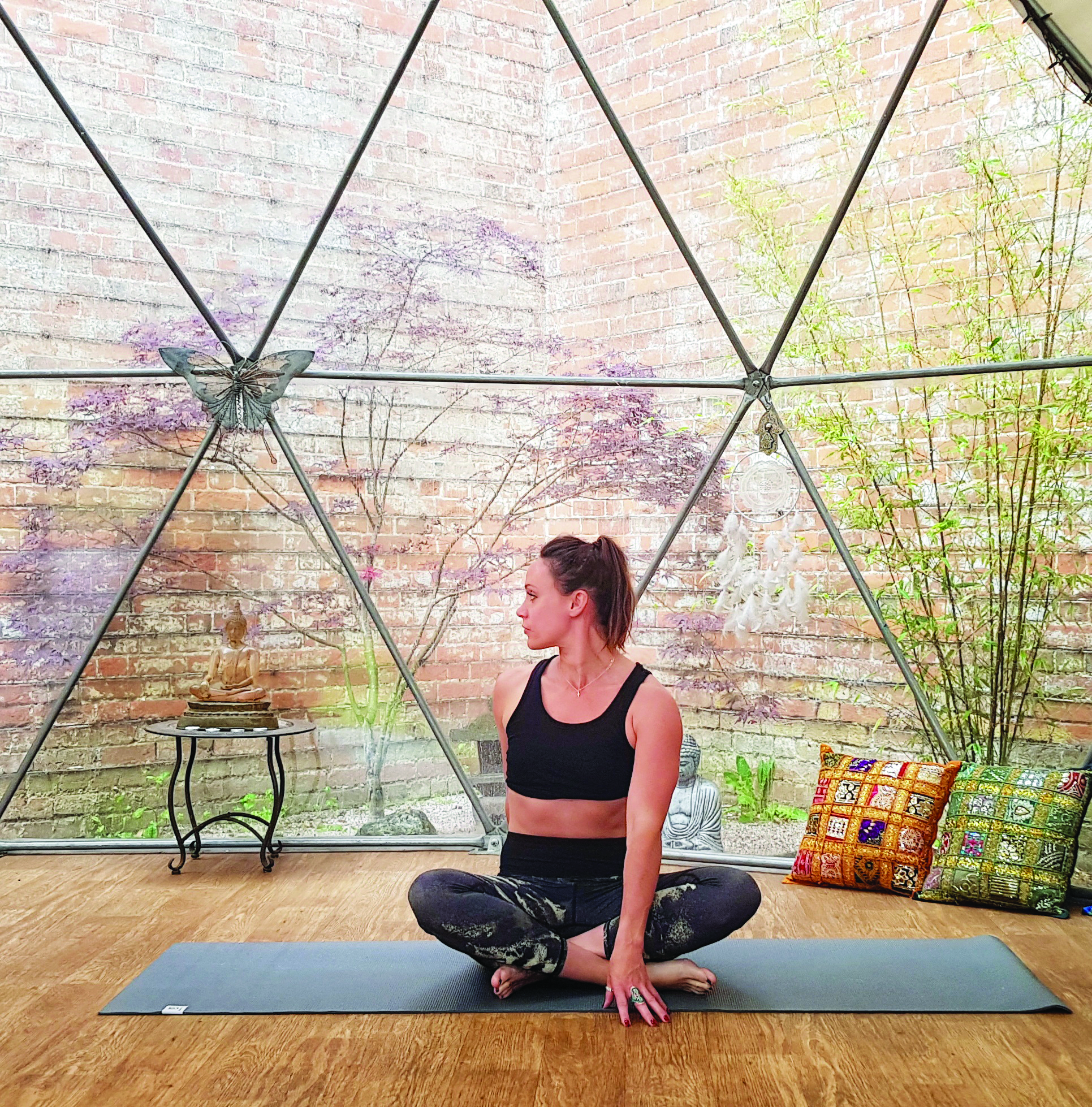
SUKHASANA (EASY POSE WITH A TWIST)
How to: Sit in easy pose with the legs crossed. Place the left fingertips on the floor in front of the crossed legs, and on the exhale, open the right shoulder and rest the right fingertips on the floor behind. Maintain length in the spine. Keep the shoulders relaxed down. Breathe while holding the pose and change sides.
Benefits: Reduces anxiety, tension and stress and, as it is a twist, it encourages a gentle detoxification at the same time.
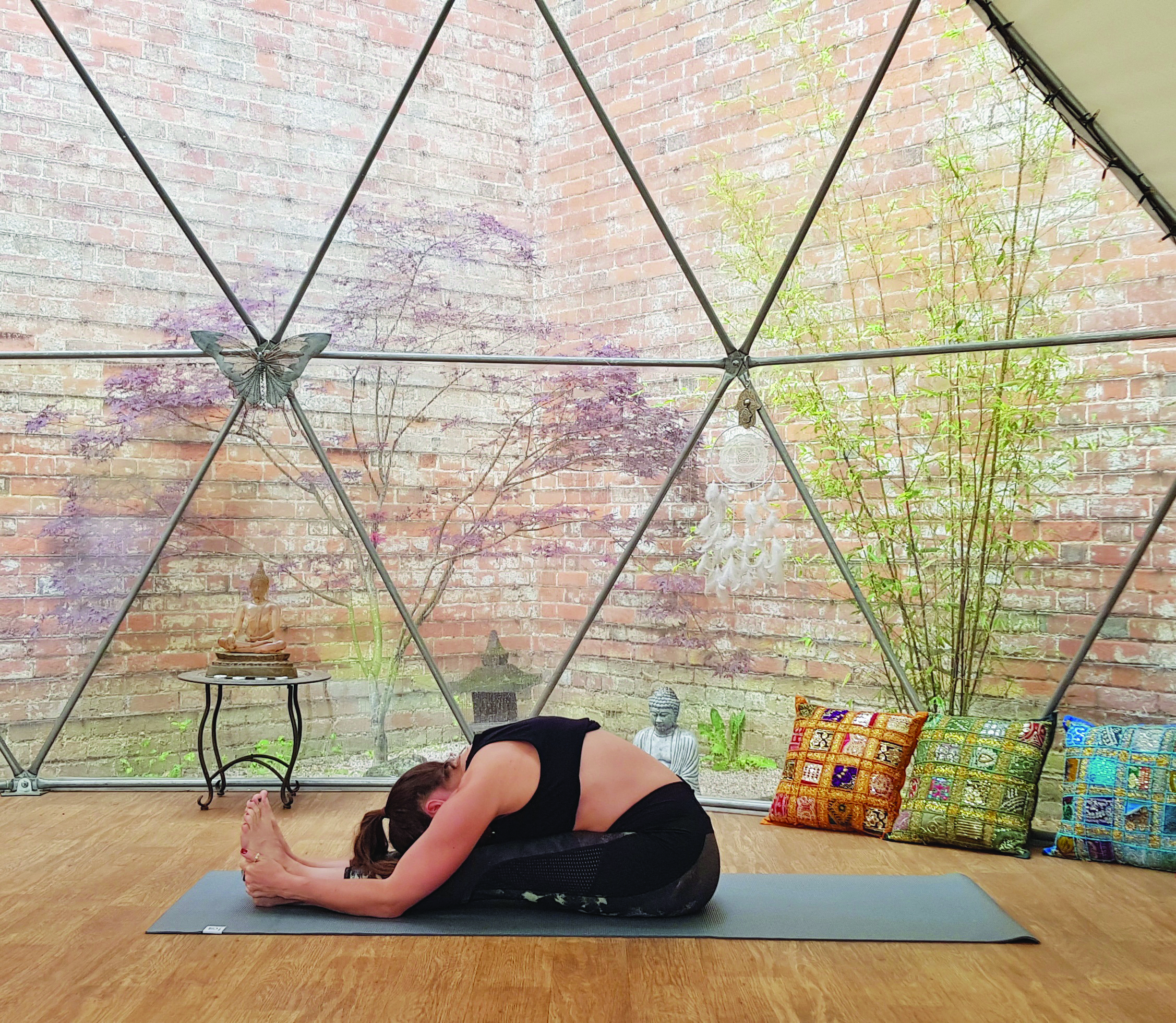
PASCHIMOTTANASANA (SEATED FORWARD BEND)
How to: Bring both legs straight out in front of you and root your sitting bones into your mat. Sit up tall, flex your feet, and inhale, sending your arms straight up towards the sky. On an exhalation, lead with your heart and reach your hands toward your toes, folding your body forward and relaxing your head and neck. Keep in mind it’s important to find length first, and then fold forward.
Benefits: This is a great pose that has many benefits. It calms the brain and can help ease depression. Stimulates the liver, kidneys, ovaries and the uterus, and aids digestion. For women it can really help with menstrual pains too.
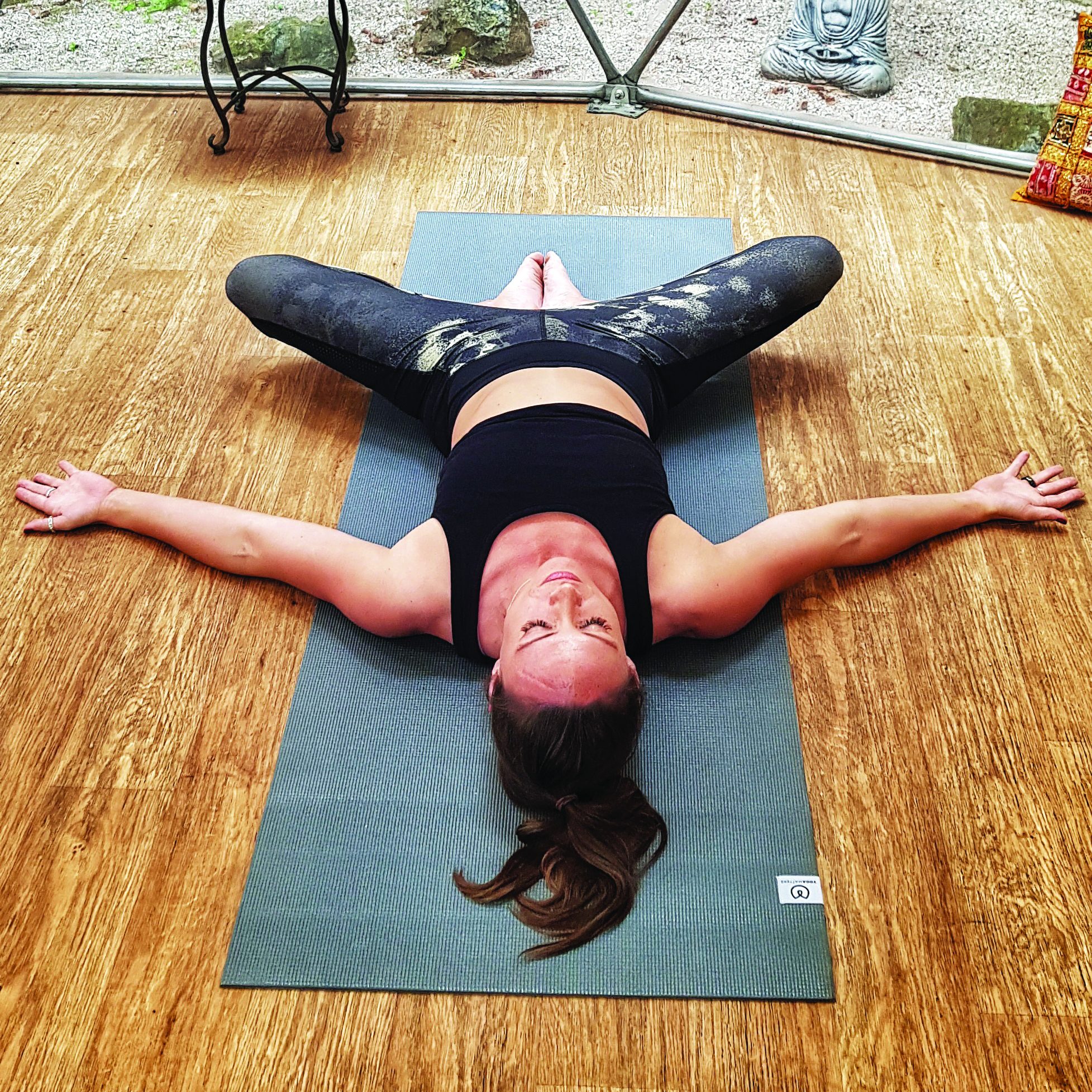
BADDHA KONASANA (RECLINED BUTTERFLY)
How to: Lie on your back. Let your arms open wide with your palms facing up. Draw the soles of your feet together, sliding them up toward your groin and letting your knees fall open. For the ultimate relaxation in this pose you can place a pillow or yoga block under each knee for support. It is lovely to lie on a pillow, and you can place an additional folded blanket underneath your head for comfort.
Benefits: Gorgeous pose that stimulates the kidneys and uterus. This is a great Yin Yoga pose because of its ultimate hip and groin releasing qualities and the fact it is super calming and a real opening pose. A great pose to do just before your final savasana (corpse pose).
Conclusion
It’s so important to leave your ego at the door when practising yoga, so don’t be too proud to practise any poses or balances near a wall if it helps. Aim to just ‘be’ in the pose. Remove any demands and expectations – take the pressure off your shoulders and accept where you are at in your practice as fully as possible. Remember, your balance, flexibility and strength will vary from day to day depending on your energy levels, sleep, the food you’ve eaten, the external demands on your life – so be compassionate with yourself.
Don’t just assume you’ll magically glide in to a pose just because you did yesterday. Be playful and patient, use props if you need them, and if you fall, try again. And enjoy the process – the falling and trying again journey helps us to develop patience and persistence, humility, and good humour. With time, practice, and patience, you will make progress.
Namaste















FOLLOW BESTFIT